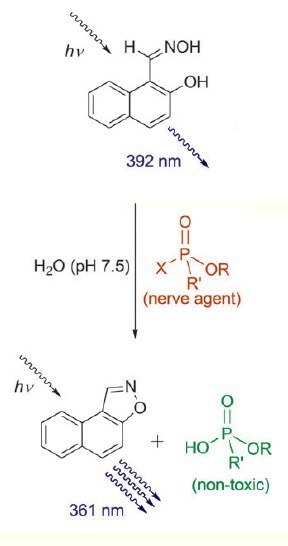Nerve agents, such as Sarin, are extremely toxic organophosphates that can kill within minutes. Now, US researchers have developed a molecular sensor that works 100,000 times faster than earlier detection systems and destroys the agent as it does so.
When inhaled, compounds such as Sarin, Soman, and Tabun, which are relatively easy to make, lead to death within minutes by blocking the enzyme acetylcholinesterase (AChE) in nerve cells. Sarin was used in the Tokyo subway terrorist attack and security experts are worried that this and other nerve agents might be used again.
Now, Julius Rebek Jr and Trevor Dale at the Scripps Research Institute in La Jolla, California, USA, have developed a new class of sensor that can detect these neurotoxins very quickly and selectively destroy the neurotoxic molecules as they do so.
Previously developed neurotoxin detection methods are not particularly sensitive are difficult to use and devices are not portable. Moreover, they merely detect the nerve agents, they do nothing to address the acute problem of possible exposure in an accidental release or terrorist attack.
Rebek and Dales’ new sensor molecule consists of a fluorescent aromatic ring system equipped with an oxime group (–C=N–OH). This type of group binds extremely quickly to organophosphates. But, more than that, there is an alcohol group next to the oxime group, which leads to a split when the sensor encounters an organophosphate and results in an intramolecular ring closure, which leads to fluorescence.

This process can be readily detected by a fluorescence monitor, but the process also effectively destroys the organophosphate, rendering it harmless. The whole detection process from organophosphate first hitting the sensor molecule to ring closure and fluorescence occurs at a rate four to five orders of magnitude faster than the original detection reagent.
The team explains that the next step is to develop a simple, rapid-response, detector for organophosphates using these new reagents. A combined filter system for installation in the event of an emergency would not only monitor levels of the organophosphate neurotoxins but would neutralize them at the same time.